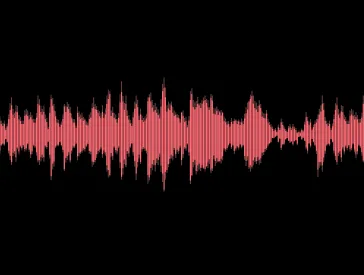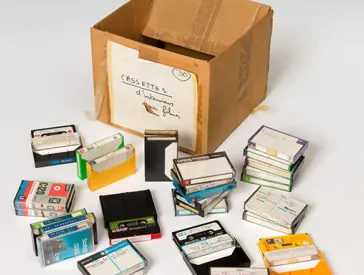Claude Lanzmann
Filmmaker and Journalist
Claude Lanzmann (1925–2018) was a French journalist and filmmaker. He gained international recognition for his 1985 film Shoah, which documented the systematic mass murder of Europe’s Jews.
Early Years and Influences
Claude Lanzmann was born on 27 November 1925 in Bois-Colombes, a suburb northwest of Paris. His grandparents had immigrated to France from Latvia, Belarus, and Ukraine. At the age of 18, Lanzmann joined a Communist youth organization and later founded a Résistance group at his secondary school in Clermont-Ferrand.
After the war, he moved to Paris, where his mother lived, and enrolled at the Sorbonne to study philosophy. In 1947, he continued his studies at the University of Tübingen, which was then located in the French occupation zone of Germany. A year later, he took a position as a lecturer at the newly established Freie Universität Berlin. During this period, he also began writing his first journalistic works.
His reportage series L’Allemagne derrière le Rideau de fer (Germany Behind the Iron Curtain), which was to appear in Le Monde, attracted the interest of Jean-Paul Sartre. This marked the beginning of a long professional and personal association with both Sartre and Simone de Beauvoir. In 1952, Lanzmann joined the editorial board of Sartre’s literary-political journal Les Temps Modernes (Modern Times), eventually becoming its editor-in-chief.
Political Engagement: Algeria and North Korea
In the 1950s, together with Sartre, Lanzmann was an active supporter of the anticolonial resistance movement in Algeria, where he met Frantz Fanon. He was also among the signatories of the Manifesto of the 121, an open letter supporting the resistance to the Algerian War in France.
During this period, while Lanzmann’s journalism focused on the political Left and international class struggle, he also traveled to North Korea. As a reporter, Lanzmann was invited to join the first Western delegation to the isolated country, in 1958, just five years after the Korean War.
Decades later he would return to Pyongyang, revisiting his impressions from that first visit and particularly his encounter with the nurse Kim Kum-sun. The result was Napalm (2017), Claude Lanzmann’s only film not related to Jewish history.
Israel
In preparation for a special issue of Les Temps Modernes on the conflicts between Israel and the Arab world, Lanzmann traveled to Israel in the 1960s. The concept behind the issue was to bring together contributions by both Israeli and Arab authors in one volume. Each side was to select its topics and contributors freely. The thousand-page special issue, titled Le conflit israélo arabe (The Israeli-Arab Conflict), was released shortly before the Six-Day War of June 1967. According to his memoirs, published in 2009 under the title Le lièvre de Patagonie (The Patagonian Hare), this was around the time he broke with Algeria’s ruling socialist-nationalist FLN. In Landzmann’s view, the party had developed into a hateful threat to the State of Israel under the leadership of Ahmed Ben Bella.
Claude Lanzmann had already visited Israel in the early 1950s, originally on commission to write an article for Le Monde. Confronted with the complex realities of the young state, realities he felt personally connected to, he abandoned the assignment. An attempt to write a book on the subject also failed. In his memoirs, he explained that only two decades later, and after several more trips to Israel, did he find the right approach with his first documentary film Pourquoi Israël (Why Israel, 1973), which explored Jewish life and identity after the Shoah and revealed the contradictions within Israeli society.
Shoah and Other Film Projects
His cinematic engagement with the young State of Israel led directly to the film project that would change everything. Claude Lanzmann devoted twelve years of his life to researching, filming, and editing Shoah. With a running time of more than nine hours, created entirely without the use of historical footage, the film centers on the testimony of eyewitnesses and the mass murder of millions at the death camps. Driven by his own need to understand, Lanzmann created a documentary and artistic achievement that shaped discussions of the genocide of Europe’s Jews and its legacy for decades.
Material from the 350 hours of footage was later incorporated into additional documentaries, including Le Rapport Karski (The Karski Report, 2010), Le Dernier des injustes (The Last of the Unjust, 2013), and finally Les Quatre Sœurs (Four Sisters, 2018). Between 1991 and 1994, Lanzmann directed Tsahal, a five-hour documentary about the Israeli military. Together with Pourquoi Israël and Shoah, it forms a trilogy on a shared theme: the existence of the Jewish people.
Claude Lanzmann received numerous awards for his work, including the Honorary Golden Bear at the Berlin International Film Festival in 2013. He died in Paris on 5 July 2018, one day after the premiere of his final film. In 2023, Shoah was posthumously inscribed in UNESCO’s Memory of the World Register.
Film poster of Shoah, 1985; Les Films Aleph



